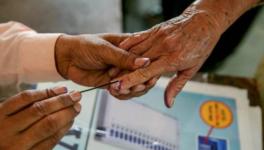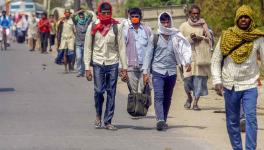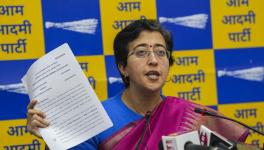Delhi Government Fiddles with Tests as Infections Surge
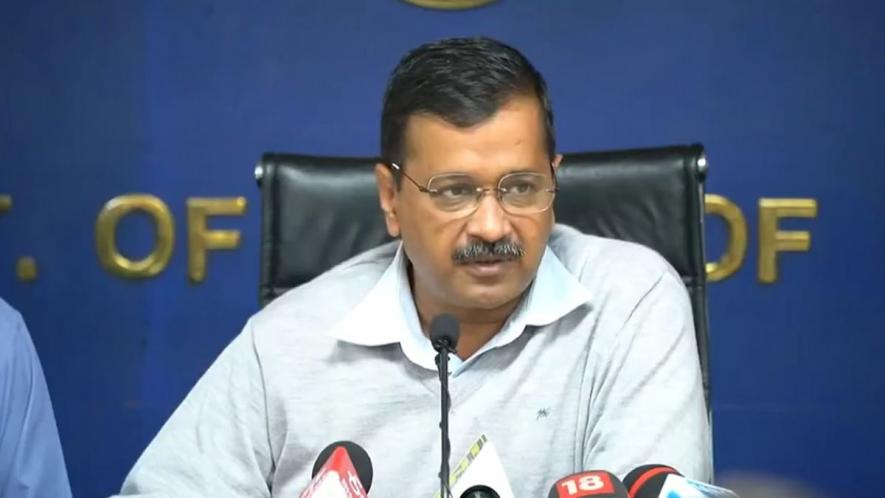
A 3-judge bench of the Supreme Court has directed various State governments to increase testing in its order to provide “proper treatment of Covid-19 patients and dignified handling of dead bodies.” The horrifying reports of the conditions of hospitals, burning ghats and burial grounds coupled with images—dead bodies and patients in the same wards, the disgraceful way the bodies are being treated—shocked the judicial conscience. They have directed the hospitals and the Chief Secretaries of the States under whose jurisdiction these hospitals come under to take remedial action and submit detailed reports to the court.
We and many others have written that as the number of cases of Covid-19 has gone up in various States, the number of tests has actually come down. The court took up two key issues regarding Delhi. The first is the reduction of tests in a period when the number of Covid-19 positive cases was going up sharply. The second is the condition of the Lok Nayak Jai Prakash (LNJP) hospital. We can also add the Guru Teg Bahadur Hospital to the category of LNJP.
Strangely, while most patients and their families are running from hospital to hospital in search of a bed, both these institutions show a large number of vacant beds. The LNJP hospital has 2,000 beds for Covid-19 patients, of which only 813 are occupied today (3:45 PM, Delhi Government’s Dashboard). Similarly, Guru Teg Bahadur Hospital has 1,500 beds for Covid-19 patients, of which only 238 are occupied today (5:19 AM Delhi Government’s Dashboard). At a time when people are rushing to all kinds of hospitals– from government to private–why are the two key hospitals, which should have seen the maximum rush of patients, lying partially idle? Clearly, the experience of patients and their families, and the delays in getting tests and admissions, which Newsclick and many other news outlets have covered, has led to people avoiding these two hospitals.
The blame for this failure lies with the Delhi government. The Kejriwal government did not strengthen the hospital system when they had time, and is now faced with a collapsing health system. The ideology-free politics of Kejriwal and the AAP does not seem to believe that a health emergency needs to be fought effectively by strengthening the public health system and involving the people. Instead, apps, dashboards and press conferences have substituted for real action. Having squandered precious time, it is now belatedly building temporary quarantine facilities and hospitals in stadiums, conference centres and other places.
Could the Delhi government also make the dashboard useful so that people can know where to go, and having gone there, what they should do to get attention? Can people get to know how to shorten the wait time between reaching the hospital, getting tested and admitted in a ward so that they can get quick medical attention?
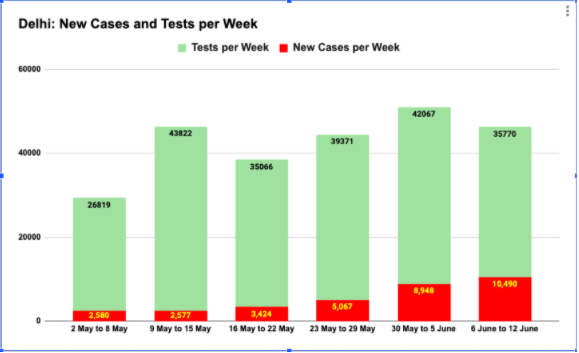
Even if we overlook the incompetence in not preparing for the Covid-19 surge, what explains the reduction of testing in Delhi? As we can see from the accompanying chart, the number of tests reached a high of nearly 44,000 during the May 9-15 week. It then fell to 35,000 before reaching 42,000 in the May 30-June 5 week. At this point, the number of infected to tested had risen from about 10% to 21%. The Delhi government then issued orders restricting testing even further and issued show cause notices to private labs and hospitals for violating its orders on restricted testing. The results: in the following week, tests reduced from 42,000 to a little more than 35,000, with the number of infected to tested rising to nearly 30%. This means that from one infected out of 10 persons tested in mid-May, the number has risen to one infected for every three persons tested by mid-June.
What explains this reduction at a time when we should have been testing more people, considering the rise in number of infections? Was it to hide the reality from the people? Or was it a belief that if we close our eyes, the problem will magically disappear?
Of course, testing is only one part of fighting the epidemic. Contact tracing, following up, separating those infected from others, providing the people with support—all these measures are still sadly lacking. And of course, strengthening the health system and looking after the health workers is the first line of our defence against the epidemic. These are the measures that the Kerala government has taken, for which it has won worldwide praise. This is the strategy that K.K. Shailaja, the Health Minister of Kerala, identified as, “trace, quarantine, test, isolate and treat.” Instead, Delhi and most other State governments decided to close their eyes to reality. This is the route that most European countries took with the collapse of their hospital systems. The US and Brazil are, of course, in a special category when it comes to how not to fight epidemics. They are in the first and second position globally in Covid-19 mortalities and new infections. The sad part is that even with an early and a draconian lockdown that caused enormous suffering to the people, we are now at number three in daily new infections and the number of dead.
Get the latest reports & analysis with people's perspective on Protests, movements & deep analytical videos, discussions of the current affairs in your Telegram app. Subscribe to NewsClick's Telegram channel & get Real-Time updates on stories, as they get published on our website.










